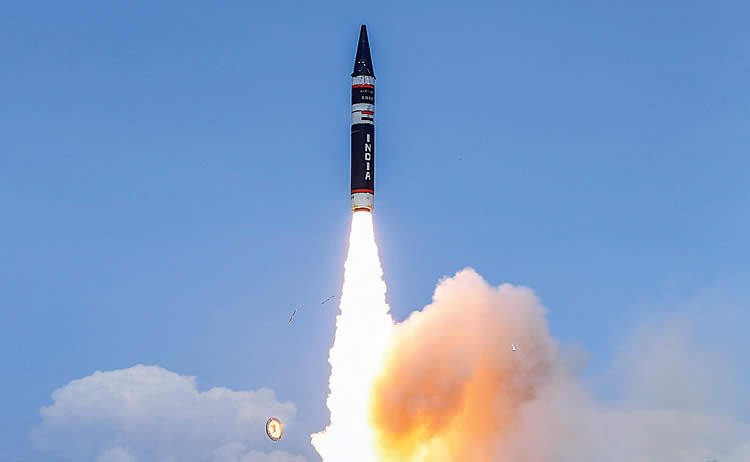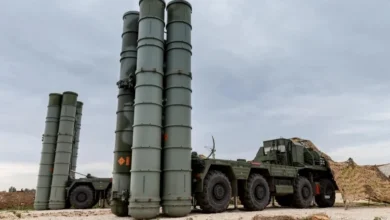What India Is Doing To Prepare For Its Own Hypersonic Ballistic Missile

- The Philippines will be its first foreign buyer, and countries such as Indonesia have expressed strong interest.
- The BrahMos NG (next generation) is also in the works, and it is smaller (6 metres long) and weighs 1.6 tonnes than the original BrahMos.
Russia announced in March of this year that it had launched a Kinzhal hypersonic ballistic missile to destroy a massive underground arms depot in western Ukraine. Military planners in India have been eagerly awaiting the arrival of the country’s own hypersonic missile. Missile scientists affiliated with the Indo-Russian joint venture BrahMos are developing hypersonic missile technology, which is only available to Russia and China. The technology is still being developed in the United States.
A hypersonic missile travels at a minimum of Mach 5. It is highly manoeuvrable, as opposed to a ballistic missile, which has a fixed trajectory. The BrahMos-2 will be the hypersonic version of the missile in India, with a range of approximately 1,500 kilometres. Trials have revealed that its top speed is nearly Mach 8, making it the fastest in the world. “BrahMos-2 is the missile’s hypersonic variant. It is expected to enter the prototype stage within the next three years,” said a top defence ministry official, adding that the missile was tested at Mach 6.5 speeds.
The Defence Research and Development Organisation (DRDO) tested the Hypersonic Technology Demonstration Vehicle (HSTDV), a hypersonic air-breathing scramjet system for propulsion, in 2020. During the testing, the HSTDV reached a speed of Mach 6 for 23 seconds, according to a defence official.
“India has joined a select group of countries, including the United States, Russia, and China, that have indigenously developed technology capable of causing the HSTDV to take an unpredictable trajectory and elude interceptor detection,” a defence official said, adding that the test-firing could be related to the BrahMos-2 hypersonic missile, which is expected to be based on Russia’s Zircon hypersonic missile.
India’s only cruise missile export is the BrahMos. The Philippines will be its first foreign buyer, and countries such as Indonesia have expressed strong interest. The current BrahMos has a range of about 500 kilometres, with the export variant having a range of 290 kilometres to stay within the MTCR (Missile Technology Control Regime) restrictions of 300 kilometres.
The MTCR establishes guidelines for limiting the proliferation of missiles and missile technology.
“Although not legally binding on members, the informal political set-up has ensured that every country has the right to defend itself using ballistic missiles while ensuring that only responsible members can develop ballistic technologies that may be used for attack, not defence,” says Girish Linganna, an Indian defence expert.
The BrahMos NG (next generation) is also in the works, and it is smaller (6 metres long) and weighs 1.6 tonnes than the original BrahMos. The original BrahMos weighs three tonnes and measures nine metres in length. The BrahMos NG has a range of 290 kilometres and can reach speeds of up to Mach 3.5. The BrahMos NG is more difficult for enemy air defence systems to locate and engage due to its smaller radar cross-section. The active electronically scanned array (AESA) radar on the BrahMos NG will replace the mechanically scanned radar on the BrahMos PJ-10.
Every armed force is expected to use the BrahMos NG. Only the Sukhoi Su-30 MKI could transport the earlier BrahMos PJ-10. The BrahMos NG is also compatible with the Indian Navy’s P75I (Project 75 India) submarines. The BrahMos NG will be available in three variants: a land-based variant for the Indian Army, an air-based variant for the Indian Air Force, and a ship and submarine-compatible variant for the Navy.
The Sukhoi Su-30 MKI will be able to transport five BrahMos NGs at once, rather than just one. MiG-29s and the indigenous LCA Tejas, as well as the newly inducted Rafales, will reportedly benefit from the BrahMos NG. “The lethality, versatility, and portability of the BrahMos NG and BrahMos-2 will exponentially increase India’s combat power.” With China’s threat growing by the day, the BrahMos NG could be a force multiplier for the Indian armed forces, according to another senior defence official.







Facebook Comments